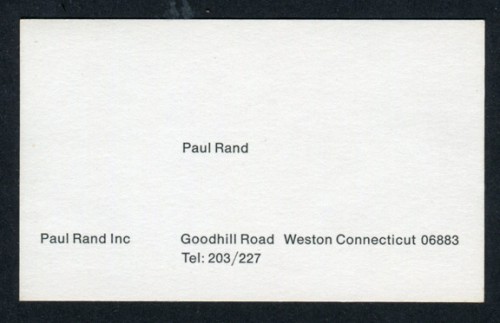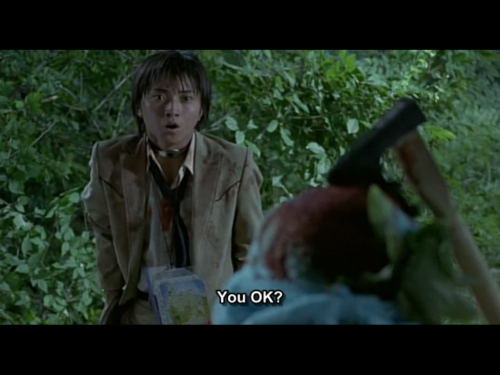 Shinya Kimura is a custom motorcycle builder, and the subject of a beautiful short profile on YouTube.
Shinya Kimura is a custom motorcycle builder, and the subject of a beautiful short profile on YouTube.
Category: visual
Anything that can be seen. Stuff with in this category is generally somehow interesting to look at, beautiful, stunning, provocative, silly, crrrrraaaaaazy, intriguing, or inspirational.
Dang, that Grain Belt sweater in the upper right corner is HOT. via AJ Fosik
My old friend Michael Ramage has a hand in this installation in the Yerba Buena Center for Art's Sculpture Garden. He's designing and building a pair of domes, made from layers of bricks and mortar and styled on ancient techniques. The artist behind it is Jewlia Eisenberg & Charming Hostess, and the vision is that the domes will be an outdoor venue for music, contemplation, and mind-expanding activities throughout the summer. I visited on Tuesday, and I was struck by the ways that each dome's oculus (fancy word for the open, circular window at the top of the dome) framed the surrounding sky and buildings. That perspective actually kind of made the generic buildings at 3rd and Howard appear to be somewhat cool. Didn't think that would be possible.

Can't imagine that it could get much better than this. Via amassblog.
Glorious, degenerate exile
In yet another shallow record-industry ploy to sell the same album twice, the Rolling Stones recently asked producer Don Was to dig through their Exile On Main Street archives and produce a remastered version with a few additional tracks. Thinking about Exile reminds me, of course, of Robert Frank's documentary with an unprintable name, a chronicle the Stones' daily lives around the time of Exile. This film presented in very raw form (in the words of one reviewer) "massive, almost unthinkable amounts of ego-gratification, and routine, torpid, everyday boredom," and it was essentially unreleasable, shown only in art houses and pirated VHS. It's safe to say that no massively successful band has ever, or will ever, give the kind of access that the Stones gave to Frank. (The sex and the drugs, they are everywhere amidst the rock 'n roll). The above video is some of the cleaner stuff culled from Frank's footage. Needless to say, the whole thing is worth seeing, even if you have to cover your eyes every once in a while. Additional reading: A nice little NPR interview with Mick and Keef.
Wordle seems sort of perfect for representing James Brown lyrics. I used Internet lyrics, which don't appear to be a true transcription of the version on In the Jungle Groove, which is 8+ minutes of "huh!" and "hey!" and "Good God!" and "smokin!" Still, good enough. While you're considering James Brown as a lyricist, you should check out Eddie Murphy's theme song for "James Brown's Celebrity Hot Tub Party" — the video; and in Wordle, which is an interesting way of visualizing one element of the satire.
I've love infographics, and I've gone on and on about collaboration and the Beatles before, so when I heard that someone had created an infographic displaying the degree to which Beatles collaborated on songs — well, "interested" would be hugely understating my emotions at the time. (Thanks, Dan, for the tip).
"The Beatles: Authorship & Collaboration" is a nicely composed graphic, clearly breaking down the contributors to each song, Beatle and non-Beatle. The songs are laid out chronologically, and the overall effect clearly reveals that the Beatles collaborated less as they progressed in their careers. (If anything is true of the Beatles, it's that they grew apart over time). The chart's data is drawn from Beatlesongs, which quantifies the degree to which each Beatle contributed to the writing of a song, using a scale of 0–100%.

I can't quibble with the desire to understand and visualize the degree to which each Beatle shaped each song, but I find the quantification bit a little — well — falsely precise. It makes for a nice infographic, but a mere skim through The Official Abbey Road Studio Session Notes, 1962–1970 makes it clear that there was quite a lot of collaboration among the four Beatles — not to mention the various "fifth Beatles," the "Black Beatle," and their producer, George Martin. Perhaps there's a difference between "collaboration" and "authorship?" In the example to the right, "Octopus's Garden," is said to be 100% Ringo? Yes, Ringo does receive sole credit for "authorship," but it is widely known that George had a significant role in shaping it. In fact, George works out the song on a piano in the Let It Be movie. How to represent this softer sort of collaboration? Good question. Shapes? Sizes? Colors? Dimensions? Whatever it is, it should fairly communicate the organic nature of creative collaboration. And dispense with the too-neat round numbers.
Ever since I heard about Battle Royale, I've wanted to see the film … Quentin Tarantino has called it "the best movie since 1992," so it's probably not surprising that it's both extremely bloody and very darkly funny. The premise: Adults fear the rise of youth, and each year they put the most badly behaved kids on an island and force them to battle each other to the death.
 Like Tarantino's movies, the setup is quick and effective.
Like Tarantino's movies, the setup is quick and effective. The humor darkens: A baby-voiced Japanese teen explains the rules of the game, including the fact that the collar worn by contestants goes "boom" under certain circumstances.
The humor darkens: A baby-voiced Japanese teen explains the rules of the game, including the fact that the collar worn by contestants goes "boom" under certain circumstances. Each "player" gets their own weapon. As the plot unfolds, the "players" learn who has what, and figure out how to work with what they have.
Each "player" gets their own weapon. As the plot unfolds, the "players" learn who has what, and figure out how to work with what they have. Finally, there are liberal amounts of blood, and much killing. Mixed with the sardonic dialogue, it's easy to see why Tarantino loves it so much.
Finally, there are liberal amounts of blood, and much killing. Mixed with the sardonic dialogue, it's easy to see why Tarantino loves it so much.Despite the nihilistic milieu, the story focused on traditional stuff — loyalty, trust and friendship; and in the end, it was actually sort of sweet, much sweeter than bleak 60's and 70's films like McCabe & Mrs. Miller or The Wild Bunch. Worth seeing, just for that weird juxtaposition.
Stop whatever you're doing and watch this. It's called "Windowdipper," and it's by Jib Kidder, aka Sean Schuster-Craig. I remember Sean describing his music as something like minimalist crunk, or Dirty South boogie, or Memphis dirty go-go, or something, but you really have to see this to get it. Sean, if you read this, remind me of the official sub-sub-genre. In the meantime, holy crap. Enjoy.




 Author:
Author: